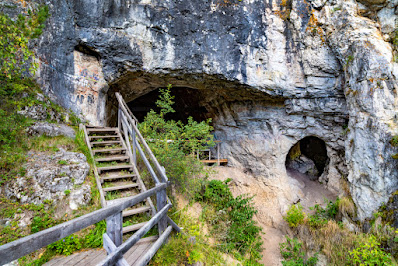While science still has a lot to learn about the mysterious hominids known as Denisovan after the cave in the Altai Mountains, Siberia, Russia, where they were first discovered, we now have a work of art and a number of artifacts that have been attributed to them. A small, carved piece of mammoth tusk that has been interpreted as the remaining piece of a broken carving of a cave lion (panthera spelea).
“This is the first such sculptural representation known in Siberia, throughout North and Central Asia, and the first zoomorphic sculpture of such antiquity. Zoomorphic figurines are known in the history of the Siberian Paleolithic, but they are usually no older than 23-21 thousand years. The age of this one is not yet established, but it is located in a stratigraphic context, which, according to the radiocarbon analysis performed at Oxford University and optically stimulated luminescence, is about 45 thousand years old. The chronology will still be specified, but the image is, in any case, not less than 30 thousand years old. This means, it is the most ancient artifact of this kind,’ says Head of the Department of Archeology of the Stone Age IAE SB RAS, Corresponding member of the Russian Academy of Sciences, Mikhail Shunkov.” (Russian Geographical Society) When the above stated “first such sculptural representation” it did not mean the first one ever discovered, many others have been previously discovered. It meant that as far as we know it may have been the first one created in that region.
The figurine is carved out of mammoth ivory. The scientists believe that this means that the material had been carried to the site from 100 – 120 km away from Denisova from the Northern foothills of the Altai mountains. (Russian Academy of Sciences) Apparently there has been no evidence of mammoths within that distance of Denisova Cave to this point. This may, however, be a case of “your lack of evidence is not evidence of lack.”
“There have been other intriguing objects found within the cave. Some 30 pieces of mammoth ivory have been recovered from the cave. Among the most unique objects are fragments of a glistening green chlorite stone bracelet, beads made of ostrich eggs – and an ancient reddish-brown processed hematite ‘crayon.’” (Seidel 2019)
While the Cave Lion carving is tentatively dated to 45,000 BP by optically stimulated luminescence dating of the stratigraphic layer it was found in, many of the other recovered artifacts cannot share that age with it. One that very possibly does is the hematite ‘crayon,’ but I do not believe that the green stone bracelet can be anywhere near that age. Also carved of mammoth ivory are an eyed needle and what the discoverers are calling a tiara, a mammoth ivory piece that they interpret as a headband that tied around the forehead to keep long hair out of the wearer’s eyes. These may also be attributable to Denisovans, or may not. The reported dates are still not generally accepted, indeed, some believe that these mammoth ivory carvings are attributable to Neanderthals who lived in the Denisova Cave at a later date.
“In 2018, a simple tiara made from wooly mammoth ivory was found buried in its depths. It had a hole ground into its rounded end, where a cord was used to tie it at the back of the head. It’s been dated as having been made some 45,000 to 50,000 years ago. It was made to keep hair out of its wearer’s eyes. And it was discarded once it was broken. Was it made by the Denosivans? Or Neanderthals?” (Siedel 2019)
“Here we likely deal
with another, more ancient culture, because there was not a single piece of
bone belonging to a Homo Sapiens found in the cave’ Novosibirsk Institute of
Archaeology and Ethnography researcher Alexander Fedorchenko told the Siberian
Times. It’s a pressing question. And one not easily answered.” (Siedel 2019)
So,
while at this time we cannot be certain who actually created these artifacts,
the possibility that one or more of them may have been Denisovan is certainly
exciting.
NOTE: Some images in this posting were retrieved from the internet with a search for public domain photographs. If any of these images are not intended to be public domain, I apologize, and will happily provide the picture credits if the owner will contact me with them. For further information on these reports you should read the original reports at the sites listed below.
REFERENCES:
Liesowska, Anna and Svetlana Skarbo, 2019, Cave Lion Figurine Made of Woolly Mammoth Tusk Found at Denisova Cave, 20 November 2019, Siberian Times, https://siberiantimes.com. Accessed online 28 March 2023.
Russian Academy of Sciences, 20 November 2019, An ancient figure of a cave lion was discovered in the Denise Cave, Siberian Division of the Russian Academy of Sciences, https://www.sbras.info. Accessed online 29 April 2023.
Russian Geographical Society, 2019, An Ancient Cave Lion Figurine Discovered in Denisova Cave, 24 November 2019, https://www.rgo.ru/en/ariticle/ancient-cave-lion-figurine-discovered-denisova-cave. Accessed online 28 March 2023.
Seidel, Jamie, 2019, Denisovan discoveries: Siberian cave studies reveal secrets of our
mysterious lost ancestors, 31 January 2019, https://www.adelaidenow.com. Accessed
online 8 May 2023.










No comments:
Post a Comment